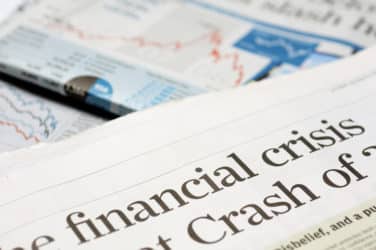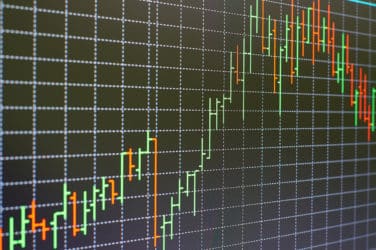The following is the welcoming remarks to the 34th Annual Cboe Risk Management Conference given by Ed Tilly, chairman and CEO of Cboe Global Markets
Welcome to the 34th annual Cboe Risk Management Conference U.S. Before I begin I want to acknowledge that today is International Women’s Day and salute the women who are joining us today. Cboe is committed to helping change the face of what has traditionally been a male-dominated industry. It’s my pleasure to speak with you this morning and to kick off what I think is one of our strongest agendas to date.
Given the recent sudden return of market volatility after a nearly two-year hiatus, the focus of this conference on volatility, VIX and risk management could not be more timely.

Edward Tilly,
Cboe Global Markets
As you know, on Monday, February 5, the S&P 500 fell by 4 percent, the Dow dropped nearly 1,200 points, the largest one-day point decline in its history, and the Cboe Volatility Index (VIX) increased by 115 percent, its largest ever single-day percentage increase.
While pullbacks in long-running bull markets are inevitable, the sharpness of the drop and the surge in volatility were Exchange-traded products positioned for continued low volatility were hit hard. Two suffered heavy losses, and one, XIV, eventually shut down. This got a lot of media attention, as would be expected.
What didn’t get attention was that many investors using VIX products to hedge their portfolios were protected by these products, or even profited from them, during the market downturn.
The reality that the majority of our customers use VIX products to better manage portfolio risk and to smooth out volatility doesn’t make news because, in a sense, what was considered extraordinary not so very long ago now has become the ordinary.
I’d like to take a step back here and explain just what I mean by that.
Before Cboe began publishing real-time VIX Index data in 1993, we could only measure volatility in the rearview mirror. Think about that for a moment. There was no uniform standard for how to think about expected volatility. What the VIX Index brought to the market was a way to measure the market’s expectation of future volatility. It was an extraordinary concept that, because of its usefulness, quickly became ordinary. VIX became an important part of the financial ecosystem, relied upon by investors, institutions and media as a benchmark for measuring the cost of hedging risk.
VIX became the world’s accepted measure of market volatility, a benchmark index like no other, and Cboe later revolutionized investing with the introduction of VIX futures in 2004 and VIX options in 2006. Since the end of the Financial Crisis in 2009, VIX futures and VIX options volume has grown on average 68% and 24% each year, respectively, to a million contracts per day combined in 2017. This included ongoing growth in both very high and low volatility periods – and all points in between – demonstrating the utility of these products in virtually any market conditions.
Over the years, we’ve worked closely with market participants, including many who regularly attend this conference, to enhance VIX futures and options trading, educate investors and strengthen the deep liquid markets in which our products trade.
The tremendous growth we have witnessed in VIX futures and options trading speaks to the unique utility of the products themselves. This utility has spawned scores of volatility-based ETPs that seek to replicate the performance of indexes tracking VIX futures and reflects the growing diversity of the user base. Ultimately, market demand will determine which ETPs thrive or even survive, and brokerage firms will continue to determine customer suitability levels for customers of these products.
By 2013, less than 10 years after the launch of VIX futures, BlackRock and others endorsed VIX futures for the broader mainstream purpose of asset allocation – confirming a trend we had long anticipated given the inverse relationship between the VIX Index and the broader stock market. Managing market volatility through common derivatives strategies is now an integral part of portfolio protection.
This to me is the most extraordinary aspect of VIX derivatives products. That we have evolved from a market that not so long ago was the domain of niche professionals to one that provides investors of every stripe with enhanced means for portfolio protection.
Investors all over the world are using VIX options and futures to buffer the effects of geopolitical turmoil, hedge their portfolios against market downturns and many other applications.
Ongoing education goes hand-in-hand with the growth of VIX derivatives trading. Extreme market conditions and unusual moves in volatility have a tendency to fuel speculation about the VIX Index generally and with it, some myths and misconceptions, including “VIX is broken,” which we tend to hear when VIX is at extreme lows or highs, or “VIX causes volatility,” or even allegations of VIX manipulation.
Some of these misconceptions come with the territory of a fast-growing and complex product set that is still relatively new and, by its nature, is most useful when the market is in turmoil. When misconceptions arise, we increase and adjust our educational efforts accordingly. Allegations of manipulation, however, are an entirely different matter and I want to address that head on here today.
As a self-regulatory organization, we list VIX products subject to the regulatory jurisdiction of both the SEC and CFTC. Working with our regulatory staff to preserve the integrity of our marketplace is our highest priority. Our regulatory team surveils for bad actors – constantly and vigilantly.
We believe the allegations recently covered in the press are misinformed and do not take into consideration key properties of VIX-related products, how they trade and correspond to one another. For example, recent allegations misunderstand the relationship between the VIX Index, which is not even a tradable product, and ETP products. In fact, ETPs seek to replicate the performance of a benchmark index tracking VIX futures, not the VIX Index.
The integrity of our VIX products and markets is paramount. And, if our regulatory team were to uncover any manipulation, it would be rooted out, swiftly and decisively. Period.
In terms of VIX education, current efforts include revamping our VIX website, releasing new white papers and hosting additional educational sessions in the months to come.
We continually work with market participants, including RMC attendees, who have always been at the forefront of volatility trading, to enhance our products, our systems and marketplace. In fact, we strongly believe we are still at the edge of innovation when it comes to our VIX product offerings, and we couldn’t be more enthusiastic about the opportunities that lie ahead.





